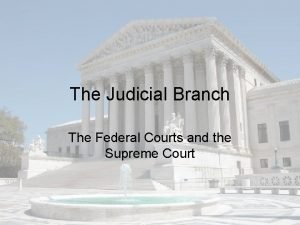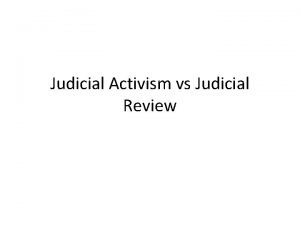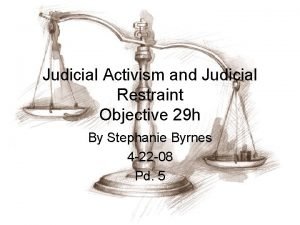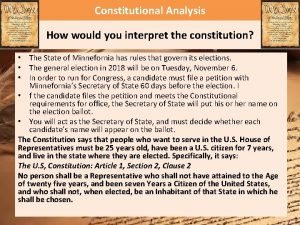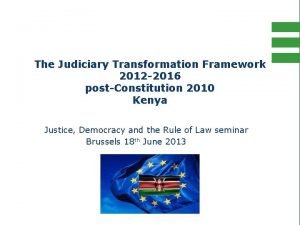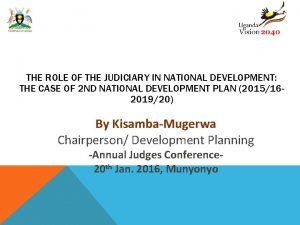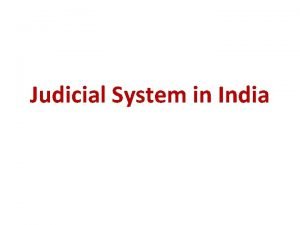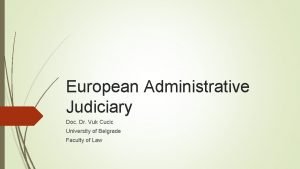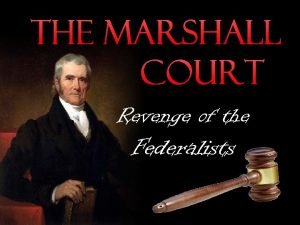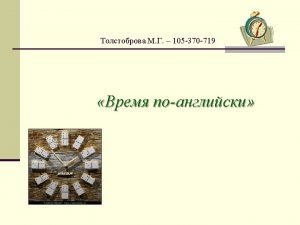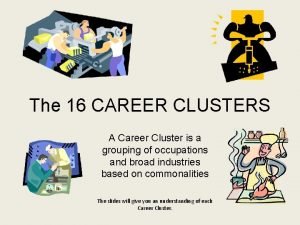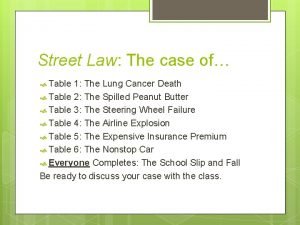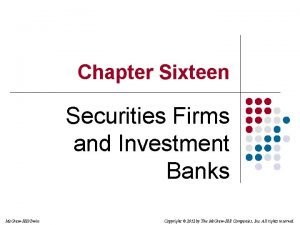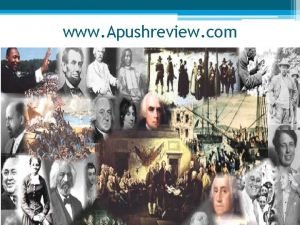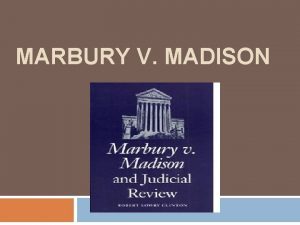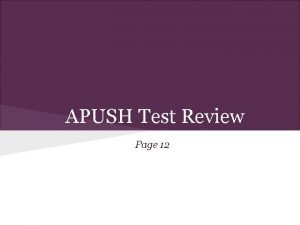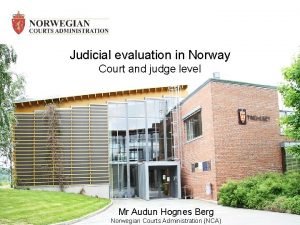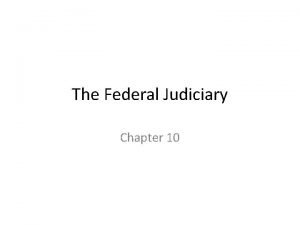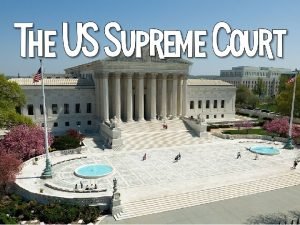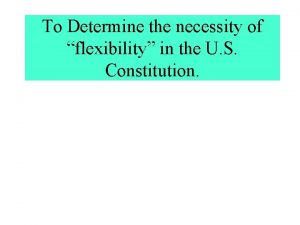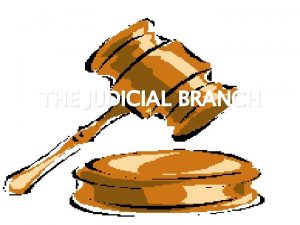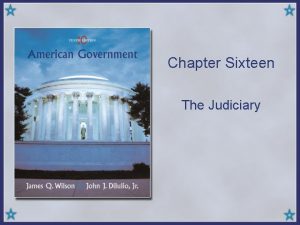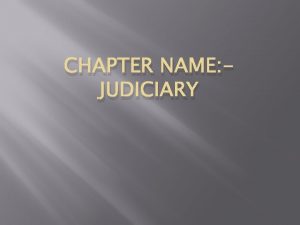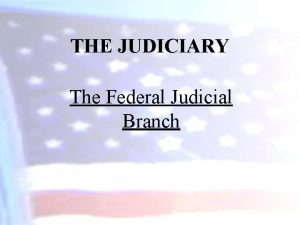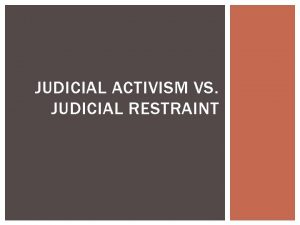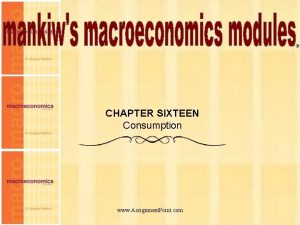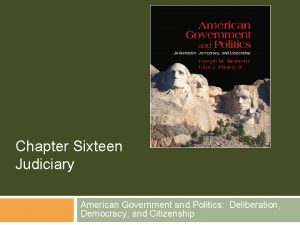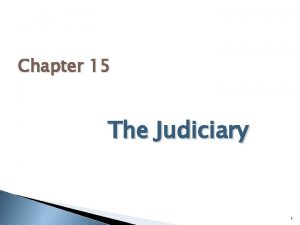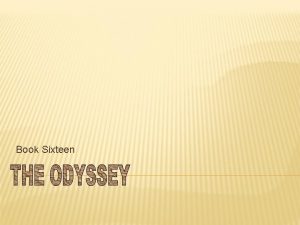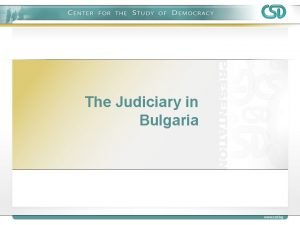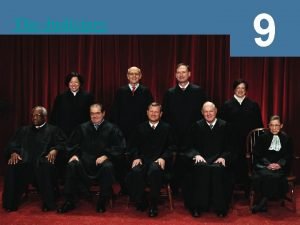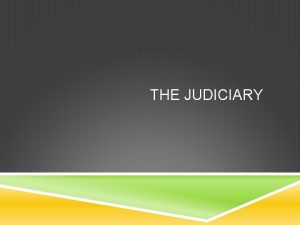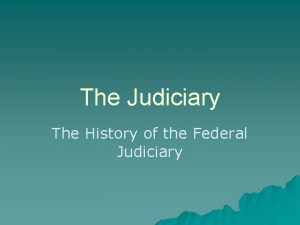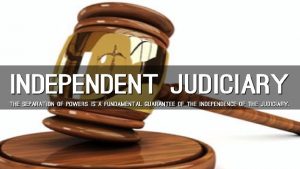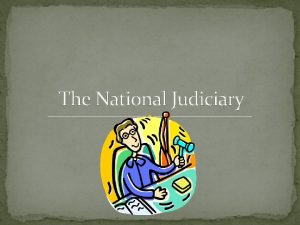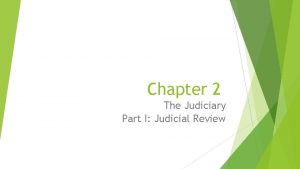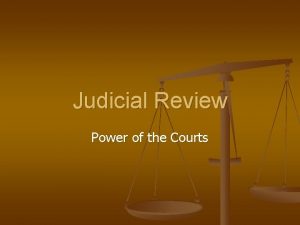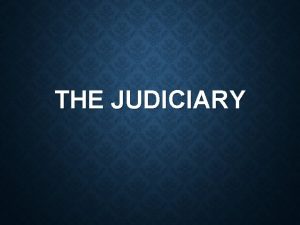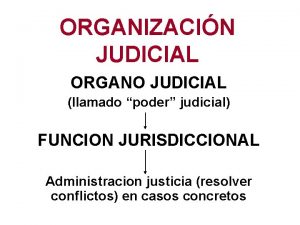Chapter Sixteen The Judiciary Judicial Review Judicial review























- Slides: 23

Chapter Sixteen The Judiciary

Judicial Review • Judicial review: the right of the federal courts to rule on the constitutionality of laws and executive actions • It is the chief judicial weapon in the checks and balances system Copyright © Houghton Mifflin Company. All rights reserved. 16 | 2

U. S. District and Appellate Courts Administrative Office of the United States Courts (January 1983). Copyright © Houghton Mifflin Company. All rights reserved. 16 | 3

Constitutional Interpretation • Strict construction: judges are bound by the wording of the Constitution • Activist: judges should look to the underlying principles of the Constitution • Today, most strict constructionists tend to be conservative, most activists tend to be liberal Copyright © Houghton Mifflin Company. All rights reserved. 16 | 4

Development of the Federal Courts • Most Founders probably expected judicial review but did not expect the federal courts to play such a large role in policy-making • But the federal judiciary evolved toward judicial activism, shaped by political, economic, and ideological forces Copyright © Houghton Mifflin Company. All rights reserved. 16 | 5

National Supremacy • Marbury v. Madison (1803): The Supreme Court could declare a congressional act unconstitutional • Mc. Culloch v. Maryland (1819): The power granted to federal government should be construed broadly, and federal law is supreme over state law Copyright © Houghton Mifflin Company. All rights reserved. 16 | 6

1865 to 1936 • The Supreme Court was supportive of private property, but could not develop a principle distinguishing between reasonable and unreasonable regulation of business • The Court interpreted the Fourteenth and Fifteenth amendments narrowly as applied to blacks—it upheld segregation, excluded blacks from voting in many states Copyright © Houghton Mifflin Company. All rights reserved. 16 | 7

1936 to Present • The Court establishes tradition of deferring to the legislature in economic regulation cases • The Warren Court provided a liberal protection of rights and liberties against government trespass Copyright © Houghton Mifflin Company. All rights reserved. 16 | 8

Selecting Judges • Party background has a strong effect on judicial behavior • Appointees for federal courts are reviewed by senators from that state, if the senators are of the president’s party (particularly for U. S. district courts) Copyright © Houghton Mifflin Company. All rights reserved. 16 | 9

Selecting Judges • Presidents seek judicial appointees who share their political ideologies • This raises concerns that ideological tests are too dominant, and has caused delays in securing Senate confirmations Copyright © Houghton Mifflin Company. All rights reserved. 16 | 10

Figure 16. 1: Female and Minority Judicial Appointments, 1963 -2003 Updated from Harold W. Stanley and Richard G. Niemi, Vital Statistics on American Politics, 2003 -2004 (Washington, D. C. : Congressional Quarterly, 2003), table 7. 5. Copyright © Houghton Mifflin Company. All rights reserved. 16 | 11

Figure 16. 1: Female and Minority Judicial Appointments, 1963 -2003 Updated from Harold W. Stanley and Richard G. Niemi, Vital Statistics on American Politics, 2003 -2004 (Washington, D. C. : Congressional Quarterly, 2003), table 7. 5. Copyright © Houghton Mifflin Company. All rights reserved. 16 | 12

Figure 16. 1: Female and Minority Judicial Appointments, 1963 -2003 Updated from Harold W. Stanley and Richard G. Niemi, Vital Statistics on American Politics, 2003 -2004 (Washington, D. C. : Congressional Quarterly, 2003), table 7. 5. Copyright © Houghton Mifflin Company. All rights reserved. 16 | 13

Federal Cases • Federal question cases: involving the U. S. Constitution, federal law, or treaties • Diversity cases: involving different states, or citizens of different states Copyright © Houghton Mifflin Company. All rights reserved. 16 | 14

Federal Cases • Some cases that begin in state courts can be appealed to the Supreme Court • Controversies between two state governments can only be heard by the Supreme Court Copyright © Houghton Mifflin Company. All rights reserved. 16 | 15

Writs of Certiorari • Requires agreement of four justices to hear the case • Involves significant federal or constitutional question • Involves conflicting decisions by circuit courts • Involves Constitutional interpretation by one of the highest state courts Copyright © Houghton Mifflin Company. All rights reserved. 16 | 16

Standing to Sue • There must be a real controversy between adversaries • Personal harm must be demonstrated • Being a taxpayer does not ordinarily constitute entitlement to challenge federal government action; this requirement is relaxed when the First Amendment is involved Copyright © Houghton Mifflin Company. All rights reserved. 16 | 17

The Supreme Court in Action • Most cases arrive through a writ of certiorari • Lawyers then submit briefs that set forth the facts of the case, summarizes the lower court decision, gives the argument of that side of the case, and discusses other issues • Oral arguments are given by lawyers after briefs are submitted Copyright © Houghton Mifflin Company. All rights reserved. 16 | 18

Kinds of Court Opinions • Per curiam: brief and unsigned • Opinion of the court: majority opinion • Concurring opinion: agrees with the ruling of the majority opinion, but modifies the supportive reasoning • Dissenting opinion: minority opinion Copyright © Houghton Mifflin Company. All rights reserved. 16 | 19

Arguments for Judicial Activism • Courts should correct injustices when other branches or state governments refuse to do so • Courts are the last resort for those without the power or influence to gain new laws Copyright © Houghton Mifflin Company. All rights reserved. 16 | 20

Arguments Against Judicial Activism • Judges lack expertise in designing and managing complex institutions • Initiatives require balancing policy priorities and allocating public revenues • Courts are not accountable because judges are not elected Copyright © Houghton Mifflin Company. All rights reserved. 16 | 21

Checks on Judicial Power • Judges have no enforcement mechanisms • Confirmation and impeachment proceedings • Changing the number of judges • Revising legislation • Amending the Constitution • Altering jurisdiction • Restricting remedies Copyright © Houghton Mifflin Company. All rights reserved. 16 | 22

Public Opinion and the Courts • Defying public opinion frontally may be dangerous to the legitimacy of the Supreme Court, especially elite opinion • Opinion in realigning eras may energize court • Public confidence in the Supreme Court since 1966 has varied with popular support for the government generally Copyright © Houghton Mifflin Company. All rights reserved. 16 | 23
 Judicial activism vs restraint
Judicial activism vs restraint Judicial restraint vs judicial activism
Judicial restraint vs judicial activism Judicial activism vs judicial restraint
Judicial activism vs judicial restraint Constitution
Constitution Judicial activism vs restraint
Judicial activism vs restraint Judicial transformation framework
Judicial transformation framework Uae national agenda
Uae national agenda Department of judiciary
Department of judiciary Judicial hierarchy in india
Judicial hierarchy in india Judiciary
Judiciary Whats the judiciary act
Whats the judiciary act 16point compass
16point compass Whats half past
Whats half past What are the 16 clusters
What are the 16 clusters Sixteen year old carrie is babysitting
Sixteen year old carrie is babysitting Sixteen securities inc
Sixteen securities inc Marbury v madison apush significance
Marbury v madison apush significance Marbury v madison judicial review
Marbury v madison judicial review Judicial review apush
Judicial review apush Arizona judicial performance review
Arizona judicial performance review Judicial review
Judicial review Judicial review
Judicial review Judicial review
Judicial review Judicial review
Judicial review
